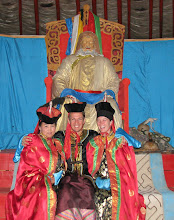Assiniboin
Assiniboin

The coniferous forests and many lakes of central North America, particularly northern Minnesota, were the home of the Assiniboin, a plains tribe whose name means "one who cooks with heated stones."
A nomadic tribe, the Assiniboin dwelled in the transportable tipi, easily moved to follow game. Some times villages contained as many as 200 tipis, set up in a circle, or if many, concentric circles. Many tipis were as large as 30 feet in diameter, and housed extended families or more than one family.
In the winter they hunted deer, elk, antelope and bighorn sheep from an established camp. In the spring, they gathered on the open plains to prepare for annual summer buffalo hunts. Communal ceremonies were held to ensure a good hunt and the gatherings allowed for hunt strategy sessions.
The buffalo was a critical part of the Assiniboin culture, providing their primary food source and skins to make clothes, tipi covers, utensils and tools. To supplement the buffalo, women gathered plants, nuts and berries in each camp, often making pemmican (buffalo, fat and berries dried).
The buffalo provided the skins for clothing, typical of the plains. Breechcloths for men, with leggings and shirts; long buckskin dresses for the women. Moccasins for both.
Like many plains tribes, the Assiniboin focused their spirituality on Wakan Tanka and believed everyone is born with four souls. Three of those souls die with the body and the fourth is contained within a "spirit bundle," which is offered gifts by the friends of the deceased until the spirit is released to follow the others.
When the Europeans first encountered the Assiniboin they were a very large and influential tribe. However, by the mid-1800s thousands of Assiniboin had succumbed to small pox brought to them by whites. A broken people, those who survived disease were forced from their homelands to a reservation in western Montana. The U.S. government promised them care and food subsidies, but the food never arrived and hundreds more starved to death on the new reservation. With so few left, the reservation land was divided and sold to the few Assiniboin who remained and white settlers.
Today Assiniboin live on reservation lands in Canada and Montana.


0 Comments:
Post a Comment
Subscribe to Post Comments [Atom]
<< Home